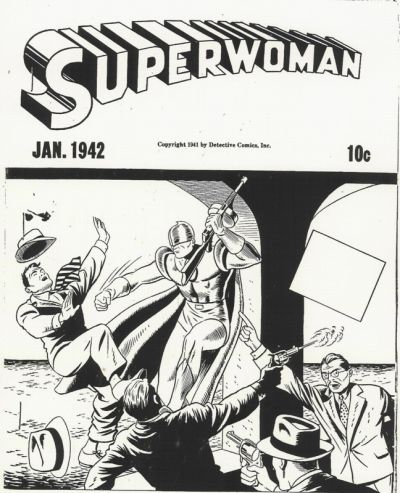
This is the second in a two-part series on organizing a résumé review event
Yesterday, I shared the four basic steps you need to undertake when organizing a resume review event.
That’s Kate Perrin of PRofessional Solutions, btw, speaking at IABC/DC Metro’s 2009 event.
Now, let’s continue from there. Steps 5 – 8 will walk you through putting the rest of the pieces in place.
5. Organizing and scheduling the reviews
This is one of the most back-breaking parts of such an event… and, in my opinion, one of the most important.
Once you’ve announced your event, you will start getting requests from reviews as well as, hopefully, reviewees willing to help their colleagues out.
If you don’t match them up ahead of time, you’ll have a huge headache on your hands at the event. And you really don’t want that, because you will be running around from start to finish (trust me on this one, I’ve organized enough of them to know).
Image: Jessica Rossi via Flickr, CC 2.0
Here’s what I used to do:
First, create an Excel spreadsheet with three tabs: one for reviewees, one for reviewers, and one for volunteers (more on volunteers in #6 below).
Then:
- Make sure you have columns for their names, contact information (phone and email), as well as any notes
- Add names to each tab in the order that you receive them
- Once all the available slots are filled up, add any more names you receive to a wait list, in the order that you receive them
As you get these names, ask each person – whether they’re giving or getting a review – what time frame suits them.
Some people want to get to the event early, some people can’t get there until later in the evening, and I’ve found that it’s best to try and give them a time slot that works for them, rather than force them to adjust to an arbitrarily-assigned slot.
This helps counter day-of attrition, not to mention the fact that they’ll appreciate you trying to work around their schedule.
Simultaneously, create a Word document and insert a table that clearly shows:
- How many review stations there are (that’s why you want tent cards with “Station A,” “Station B,” etc., as mentioned in #1 yesterday)
- How many time slots there are per station
As you get the names and preferred time slot for each person, bung ’em in here.
Note: those who are giving multiple reviews will appreciate it if you ask them whether they’d like their sessions to be back-to-back, or with a break in between.
After all, it’s a networking event too, and they might like to grab a bit to eat, gab with some old friends, etc.
This will help you see, at a glance, what slots you have left open, who’s matched up with whom, and when the review slots have been filled up.
Another note: what you don’t have to do is match reviewees with the reviewer they want.
They’re getting a free review and they should be gracious enough to take whomever they get.
A couple of days before the event, convert this to a PDF document (don’t do this as soon as your schedule is full, because there are invariably changes towards the end, and you’ll have to keep converting it).
Here is the IABC/DC Metro resume review schedule from a few years ago to help you out.
6. Volunteers
Even if you’re Superwoman (or Superman), you are going to be very tired if you try to manage the event on your own.
So try to recruit a couple of volunteers to help you “steer” the event.
They can help you with:
- Welcoming reviewers and reviewees as they arrive
- Directing them to their allotted review station
- Checking people off the list (the PDF schedule comes in handy here) as they complete their sessions
- Letting you know if someone doesn’t show up, so that you can try to find someone to take their place
- Keeping an eye on the time; once people start talking, they can easily go over their allotted time
A polite way to do this is to walk up to the pair and ask them to finish their conversation elsewhere (or later, if the reviewer is scheduled to do another review with a different person), so that the next pair can sit down at that particular station.
Your volunteers can only help you if you let them know in advance what you expect from them, so be clear as to what you need them to do, when you need them to arrive at the event, and so on.
Make sure that you connect with them before the event starts, they have a copy of the final schedule, and everyone knows what everyone else looks like.
Note: a side benefit of getting volunteers to help you with this kind of event is that they experience what it’s like to be a volunteer leader.
And you may have primed some future leaders, not to mention new members, by inviting their participation.
7. Communicating with reviewers and reviewees
It is very important to be in regular communication with reviewers and reviewees.
 The more you tell them about what to expect during the event, as well as do’s and don’ts, the less likely they are to be surprised by anything, or give you any last-minute heart attacks.
The more you tell them about what to expect during the event, as well as do’s and don’ts, the less likely they are to be surprised by anything, or give you any last-minute heart attacks.
And you’ll really feel like Superwoman. Or Superman.
Cool comic book image from Terry McCombs via Flickr, CC 2.0
Here are some of the things you can do, once the event is scheduled and open for registration:
- Make the registration details clear (for example, at our chapter, event registration per se does not include a review session; these have to be requested separately)
- Make it clear that reviews will be allotted on a first-come, first-served basis
- Find out what time slot works best for reviewers and reviewees (see #5 above) and assign them accordingly
- Tell the reviewers and reviewees what time slot they have been assigned, and with whom
- If you get requests once your allotted slots have been filled, put those names on a wait list and let ’em know that that’s what you’ve done, making it clear that you will only be able to accommodate the wait list if there are cancellations
- If you get cancellations – and you will – contact the next person in the queue and see if they would like the available slot
Once all slots have been filled, send a bcc email (maintains privacy) to everyone giving and getting reviews with the final PDF schedule as well as instructions for the event itself.
For example:
- Ask them to arrive at least 10 minutes before their scheduled time
- Let them know that if they’re late, they may forfeit their slot to someone on the wait list (or who walks in, because that will happen as well)
- Remind them to bring several copies of their résumés to the event, as well as business cards, and not to send them to you
- Remind them of what time the speaker will be presenting (if you have one), so that they can try to be there during that time
- Remind them to register for the event itself, if they haven’t already done so (especially important if there is a meeting fee, which is likely since there will be food and drinks)
If you have a wait list going, send them a separate bcc email that gives them the format for the evening, and:
- Remind them to come as early as possible so that you can try to fit them in
- Remind them that they are on a wait list and that there is no guarantee they will get a review session, but the best chance they have of getting one is showing up early
This last bit is very important. You’d be amazed at how many people take it for granted that because they are on a wait list, they are guaranteed a review.
Er, no. But you have to remind them of that.
In all the years I organized this event for the chapter, we never once had to turn away someone who was on the wait list, because invariably senior chapter members would show up for the event, and be more than willing to help out when we asked them.
But it helps to manage expectations if you let them know their review is a “maybe,” and not a “sure thing!”
You can customize all of this for your particular event. But it’s a good idea to send the instruction email out both when the schedule has been filled, as well as 2-3 days before the event, to allow for cancellations, changes in the schedule, and so on.
Here’s a video of Kate speaking at our 2009 event. Sorry about the shaky video, it was my first time doing this.
8. Managing the event
The day of the event, your hope is that all of the above falls into place.
Of course there will be last-minute glitches; nothing in life ever goes smoothly. You’re going to have to roll with the punches, and try to fill these gaps as best you can.
But if you try and organize as much as you can ahead of time, chances are those will be kept to the minimum.
Did this help you? What tips do you have, if you’ve organized a résumé review event for your own organization? If you’ve done it differently, will you share your experiences?



![[EVENT]: PR Hacks for Small Biz (online)](https://shonaliburke.com/wp-content/uploads/2021/06/FB-Ad-1200x800-01-01-01-Copy-500x383.jpeg)






Hey Shonali, your 2 blog posts on resume review event are really helpful, well-explained and systemized. I am amazed and wanted to say big thanks! You are providing really fundamental tips. I think the two posts can compound a great e-book :)
Best wishes,
Petya
http://www.higher-and-higher.com/
@Petya You know, Petya, I was thinking that myself when I wrote them… that these are perhaps too long for blog posts, and would make a better e-book. But I needed content, and I thought these would come in handy, so they ended up being published.
Do let me know if you put these to use in any way. And thanks, as always, for stopping by!